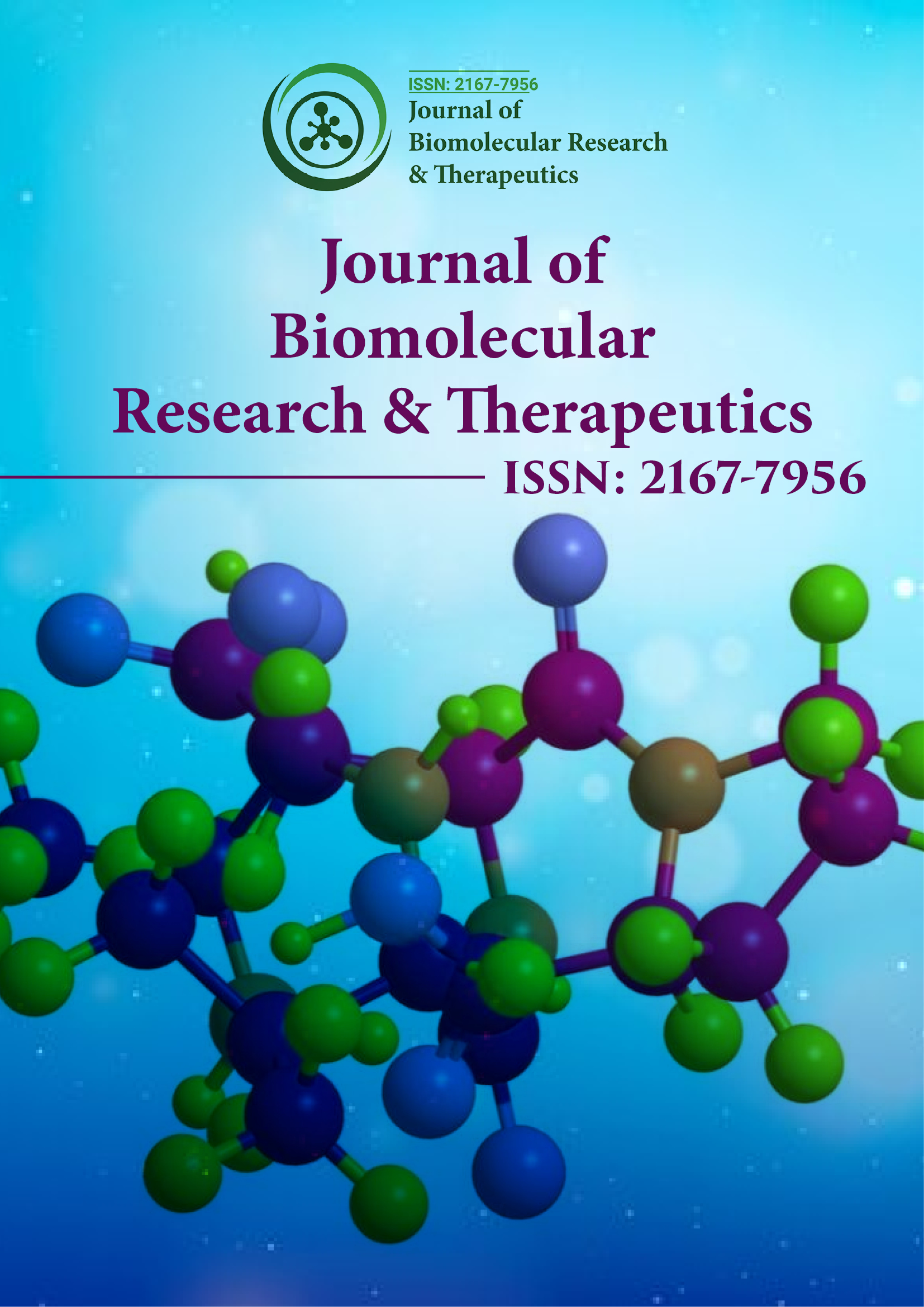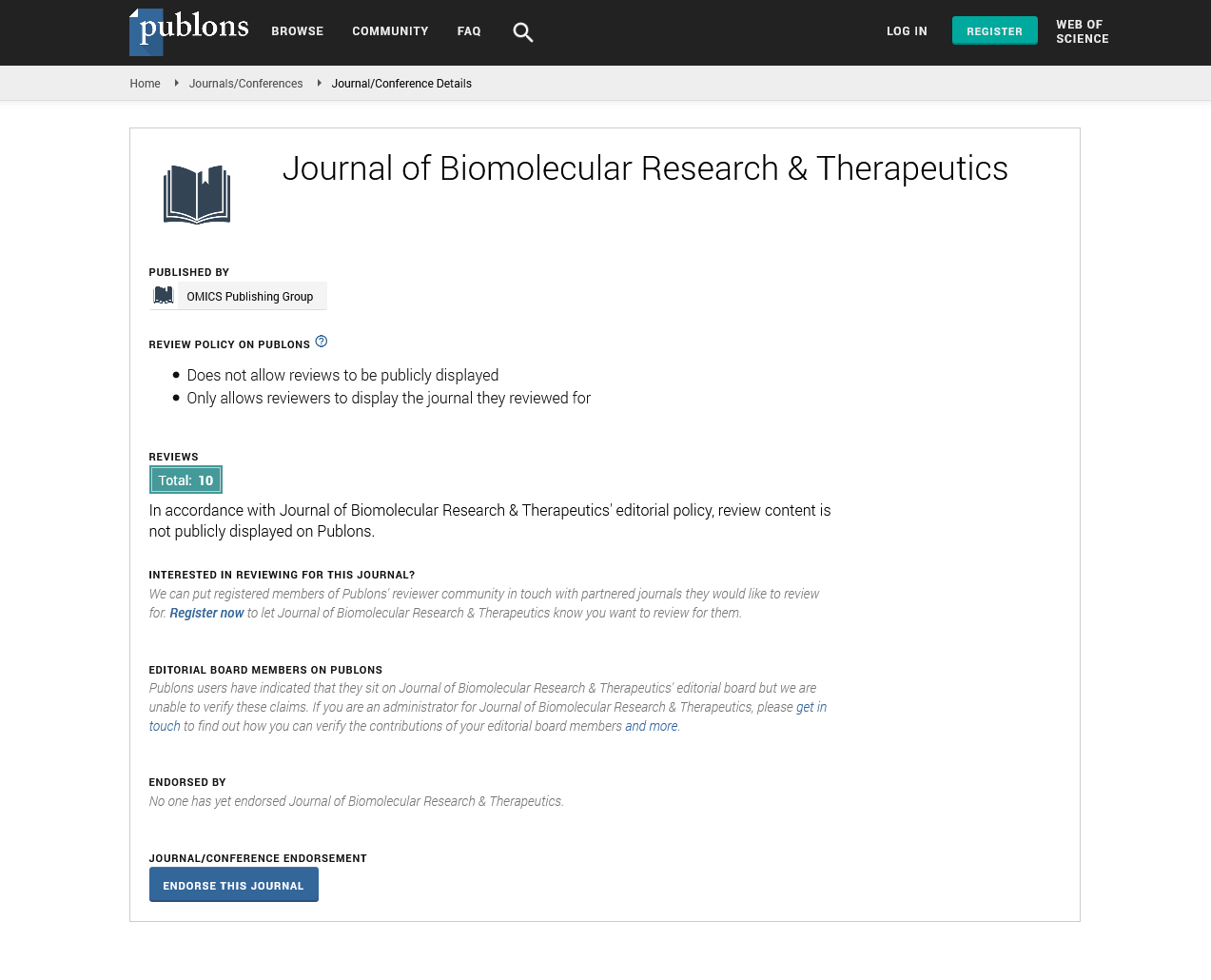PMC/PubMed Indexed Articles
Indexed In
- Open J Gate
- Genamics JournalSeek
- ResearchBible
- Electronic Journals Library
- RefSeek
- Hamdard University
- EBSCO A-Z
- OCLC- WorldCat
- SWB online catalog
- Virtual Library of Biology (vifabio)
- Publons
- Euro Pub
- Google Scholar
Useful Links
Share This Page
Journal Flyer

Open Access Journals
- Agri and Aquaculture
- Biochemistry
- Bioinformatics & Systems Biology
- Business & Management
- Chemistry
- Clinical Sciences
- Engineering
- Food & Nutrition
- General Science
- Genetics & Molecular Biology
- Immunology & Microbiology
- Medical Sciences
- Neuroscience & Psychology
- Nursing & Health Care
- Pharmaceutical Sciences
Opinion Article - (2024) Volume 13, Issue 1
Innovations on Bio-Immobilization Methodologies: Employing Biological Organizations and its Applications
Alexander Frost*Received: 29-Jan-2024, Manuscript No. BOM-24-25307; Editor assigned: 31-Jan-2024, Pre QC No. BOM-24-25307 (PQ); Reviewed: 14-Feb-2024, QC No. BOM-24-25307; Revised: 21-Feb-2024, Manuscript No. BOM-24-25307 (R); Published: 28-Feb-2024, DOI: 10.35248/2167-7956.23.13.369
Description
In the nation of biotechnology and bioengineering, the concept of bio-immobilization stands at the innovative research and development. Bio-immobilization refers to the process of confining biological entities such as enzymes, cells, antibodies, or proteins onto solid support materials, thereby enhancing their stability, activity, and functionality for various applications. Over the years, significant advancements in bio-immobilization techniques have prepare for transformative advancements in fields ranging from healthcare to environmental and industrial processes.
One of the lead motivations driving the exploration of bio-immobilization techniques is the desire to overcome limitations associated with the use of free-floating or soluble biological entities. These limitations often include issues related to stability, reusability, and ease of separation. By immobilizing biological entities onto solid surfaces or within matrices, researchers can address these challenges and reveal new possibilities for their utilization.
One of the most prominent applications of bio-immobilization techniques lies in the field of bio catalysis. Enzymes, nature's catalysts, play a fundamental role in numerous biochemical reactions. However, their practical applications are often inhibiting by factors such as sensitivity to environmental conditions and susceptibility to degradation. Bio-immobilization is a solution by providing a platform to anchor enzymes onto solid supports, thereby enhancing their stability and facilitating their reuse in bio catalytic processes. This approach not only improves the efficiency of enzymatic reactions but also enables the development of novel biocatalysts with tailored properties for specific applications.
Moreover, bio-immobilization techniques have revolutionized the landscape of bio sensing and diagnostic technologies. Immobilizing biomolecules such as antibodies or DNA probes onto sensor surfaces allows for the selective detection of target analyses with high sensitivity and specificity. This has led to the development of various biosensors for applications ranging from clinical diagnostics to environmental monitoring and food safety. By exploiting the specificity of biological interactions and associating them with advanced immobilization strategies, researchers have created powerful tools for rapid and accurate detection of biomarkers, pathogens, and environmental pollutants.
In addition to biomedical applications, bio-immobilization techniques have found widespread use in the field of bioremediation. Microorganisms immobilized within porous matrices or biofilms can efficiently degrade contaminants in soil, water, and air, offering a sustainable approach to environmental clean-up. By involving microbial association within immobilization matrices, researchers can create strong bioreactors capable of treating diverse pollutants and mitigating environmental pollution effectively.
Furthermore, the integration of bio-immobilization techniques with emerging technologies such as nanotechnology and 3D printing has opened up for innovation. Nanomaterials with unique properties, such as high surface area-to-volume ratios and tunable surface chemistries, serve as excellent platforms for immobilizing biological entities with precision and control. By engineering hybrid Nano-bio interfaces, researchers can create multifunctional materials with customized properties for targeted applications in drug delivery, tissue engineering, and biocatalysts.
In conclusion, advancements in bio-immobilization techniques have impel the field of biotechnology forward, enabling the exploiting of biological objects for a various of innovative applications. From enhancing the efficiency of bio catalytic reactions to revolutionizing bio sensing technologies and environmental remediation, bio-immobilization offers proficient solutions to complex challenges across various domains. As researchers continue to explore new materials, methodologies, and applications, the future holds immense potential for the continued advancement of bio-immobilization techniques and their transformative impact on science and society.
Citation: Frost A (2024) Innovations on Bio-Immobilization Methodologies: Employing Biological Organizations and its Applications. J Biomol Res Ther. 13:369.
Copyright: © 2024 Frost A. This is an open-access article distributed under the terms of the Creative Commons Attribution License, which permits unrestricted use, distribution, and reproduction in any medium, provided the original author and source are credited.

